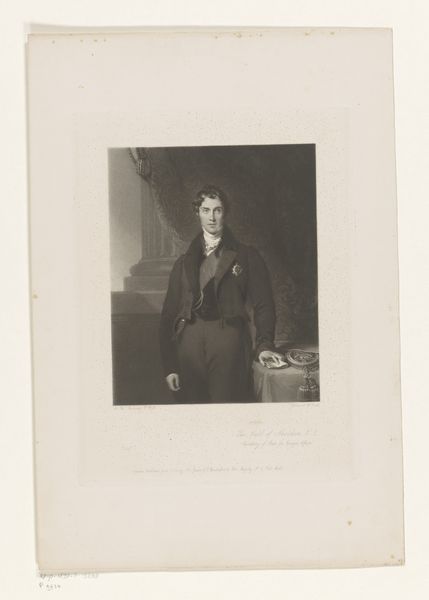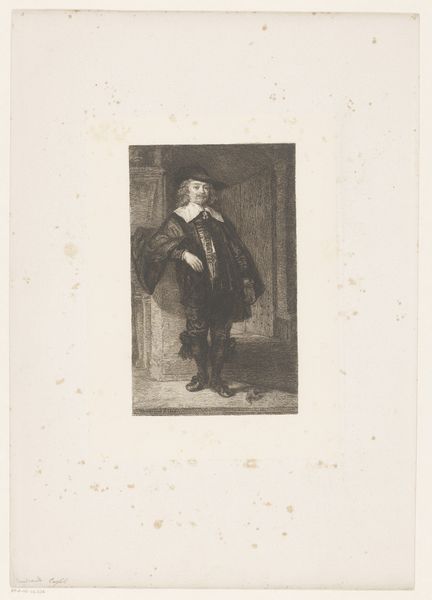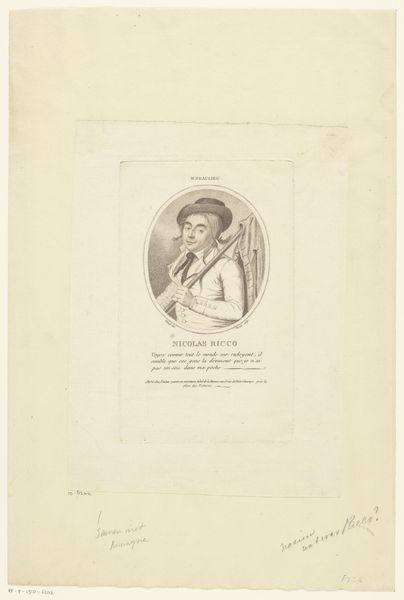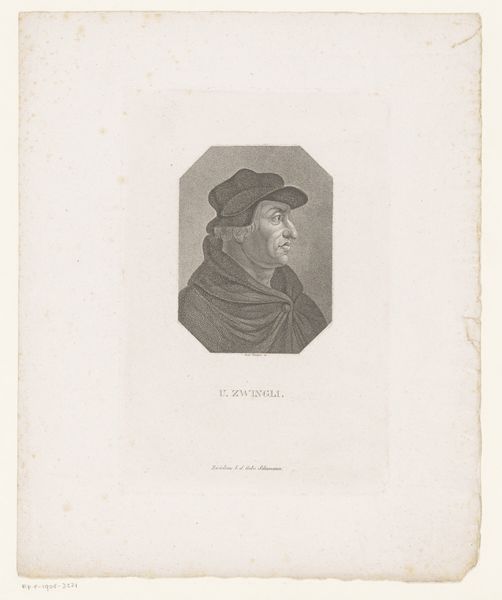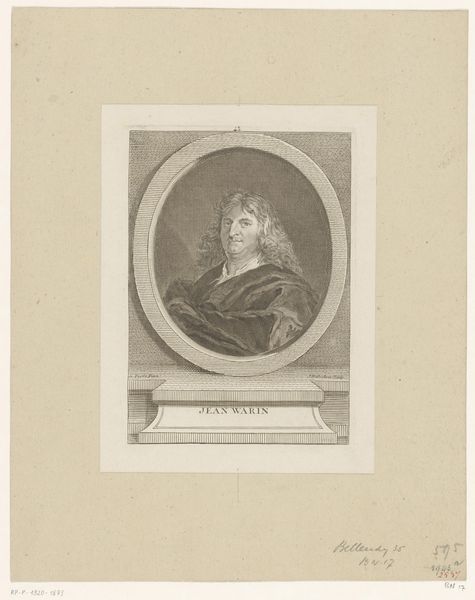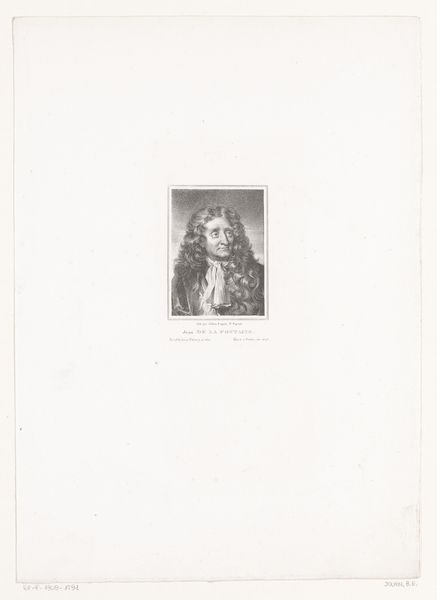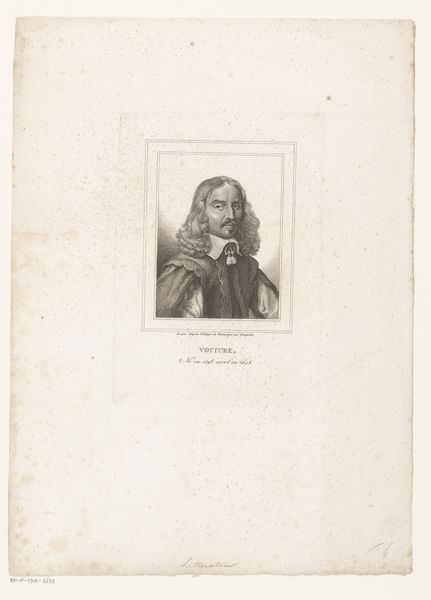
print, etching
#
portrait
#
dutch-golden-age
# print
#
etching
#
historical photography
#
realism
Dimensions: height 262 mm, width 195 mm
Copyright: Rijks Museum: Open Domain
Curator: Welcome. Before us is an etching entitled "Portret van Gerard Dou," dating approximately from 1849 to 1870. The artist is listed as C. Defet, working in a style reminiscent of the Dutch Golden Age. Editor: My goodness, he has the wistful look of someone who’s been posing for far too long! All that painstaking detail—it’s beautiful, but you can feel the weight of it, almost a melancholy. Curator: The composition adheres to a formal structure, positioning Dou within a simulated architectural frame. Note how the linear perspective of the arch guides the eye inward, and the contrasting textures define distinct spatial layers. Editor: Layers within layers! It's like looking into the man’s mind itself. See that painter’s palette he holds? It seems almost weightless against the rigid geometry surrounding him, like a symbol of artistic freedom barely contained. Curator: Indeed. Consider how the etching medium itself, with its capacity for fine detail and tonal variation, enhances the sense of realism. It evokes a similar level of detail seen in Dou's paintings themselves, though it does transform them into the language of monochrome print. Editor: So, Defet translates Dou... it's an echo! What do you think, an homage, a mimicry, or maybe even something playful? You can imagine them in their studios, centuries apart, connected by this quiet dialogue. Curator: That perspective brings in mind a sense of intertextuality and art history as ongoing conversation across time. Editor: Exactly. You begin to imagine what Dou, as Defet's subject, might have thought. This image manages to both immortalize and humanize him. Curator: The work invites reflection on the role of the artist, the passage of time, and the enduring power of artistic legacy. Editor: A small picture that speaks volumes, then—a visual poem on art and its reflections.
Comments
No comments
Be the first to comment and join the conversation on the ultimate creative platform.
